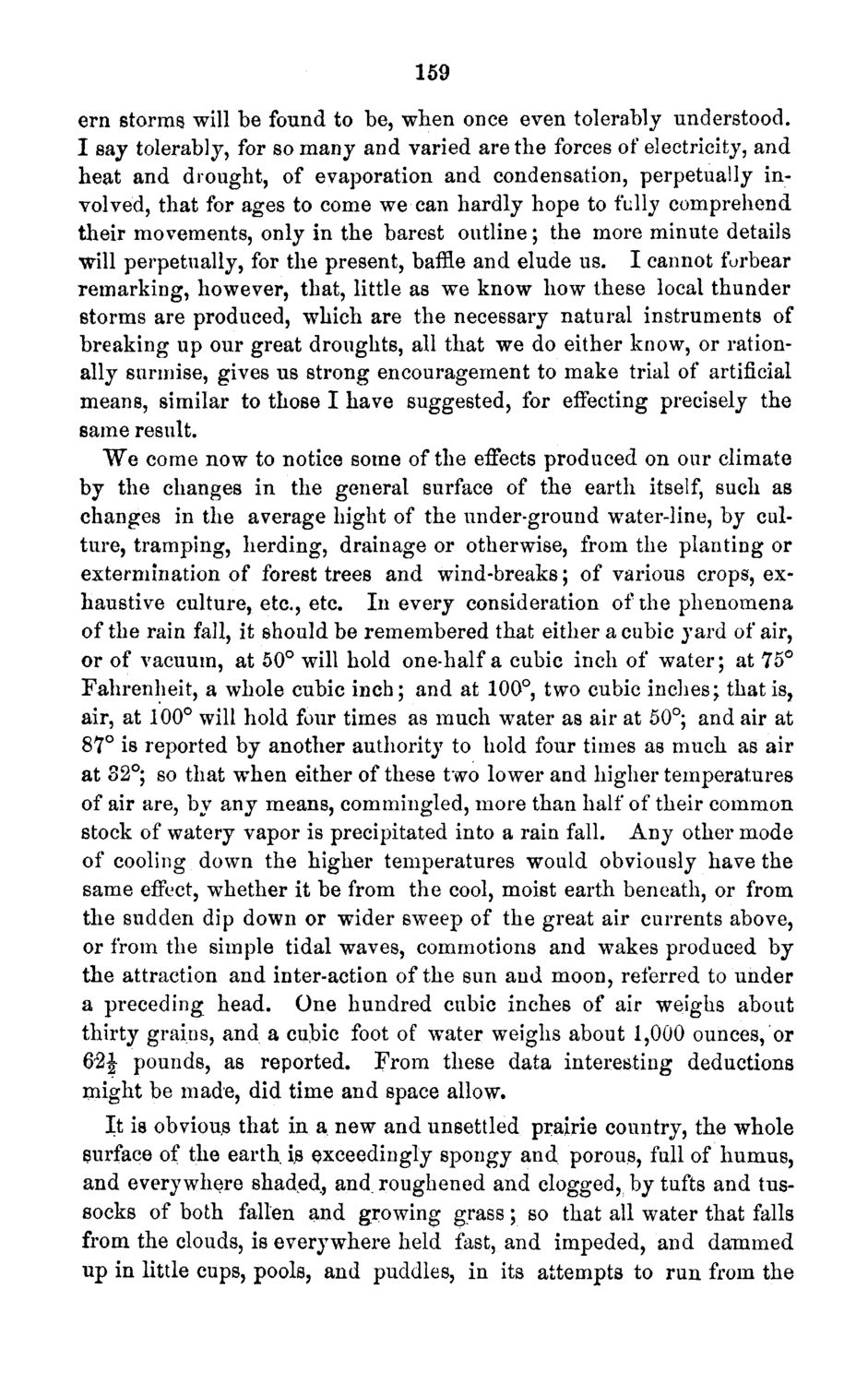| |
| |
Caption: Board of Trustees Minutes - 1871
This is a reduced-resolution page image for fast online browsing.

EXTRACTED TEXT FROM PAGE:
159 ern storms will be found to be, when once even tolerably understood. I say tolerably, for so many and varied are the forces of electricity, and heat and drought, of evaporation and condensation, perpetually involved, that for ages to come we can hardly hope to fully comprehend their movements, only in the barest outline; the more minute details will perpetually, for the present, baffle and elude us. I cannot forbear remarking, however, that, little as we know how these local thunder storms are produced, which are the necessary natural instruments of breaking up our great droughts, all that we do either know, or rationally surmise, gives us strong encouragement to make trial of artificial means, similar to those I have suggested, for effecting precisely the same result. "We come now to notice some of the effects produced on our climate by the changes in the general surface of the earth itself, such as changes in the average hight of the under-ground water-line, by culture, tramping, herding, drainage or otherwise, from the planting or extermination of forest trees and wind-breaks; of various crops, exhaustive culture, etc., etc. In every consideration of the phenomena of the rain fall, it should be remembered that either a cubic yard of air, or of vacuum, at 50° will hold one-half a cubic inch of water; at 75° Fahrenheit, a whole cubic inch; and at 100°, two cubic inches; that is, air, at 100° will hold four times as much water as air at 50°; and air at 87° is reported by another authority to hold four times as much as air at 32°; so that when either of these two lower and higher temperatures of air are, by any means, commingled, more than half of their common stock of watery vapor is precipitated into a rain fall. Any other mode of cooling down the higher temperatures would obviously have the same effect, whether it be from the cool, moist earth beneath, or from the sudden dip down or wider sweep of the great air currents above, or from the simple tidal waves, commotions and wakes produced by the attraction and inter-action of the sun and moon, referred to under a preceding head. One hundred cubic inches of air weighs about thirty grains, and a cubic foot of water weighs about 1,000 ounces, or 6'2| pounds, as reported. From these data interesting deductions might be made, did time and space allow. It is obvious that in a new and unsettled prairie country, the whole surface of the earth is exceedingly spongy and porous, full of humus, and everywhere shaded, and. roughened and clogged, by tufts and tussocks of both fallen and growing grass; so that all water that falls from the clouds, is every where held fast, and impeded, and dammed up in little cups, pools, and puddles, in its attempts to run from the
| |